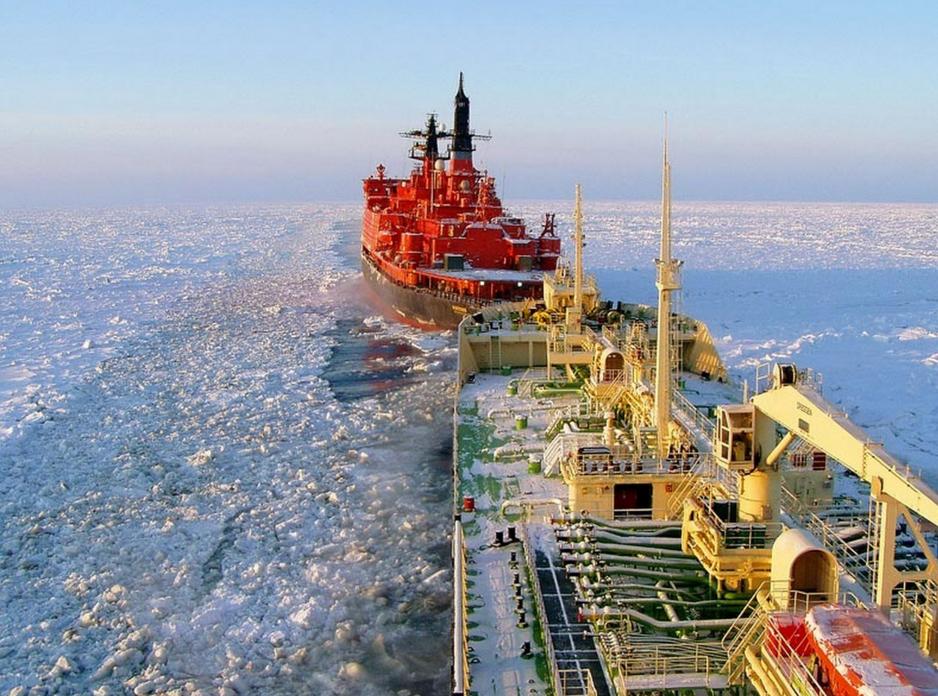Northern Norway and South Korea join efforts about the Northern Sea Route

An icebreaker from Rosatomflot escorts a vessel through icy areas along the Northern Sea Route. Will future vessels avoid sailing in the Russian economic zone in order to avoid Putin's requirement about having a Russian escort? (Photo: Rosatomflot)
How realistic is it to envision commercial traffic through the Northern Sea Route?
A recently completed project is soon to be presented in the form of a book, however, some of the results will also be presented during this week’s Arctic Frontiers in Tromsø, Norway. The Center for High North Logistics has conducted the study, along with partners from South Korea and the industry.
Dr Bjørn Gunnarsson says the goal of the project, which started in April 2015, has been to find and make available information regarding use of the Northern Sea Route (NSR) so that commercial actors have the information they need in order to consider NSR an option.
- Simply put, it could be called a feasibility study, he says. Several factors have been investigated, such as potential oil spills, how the Polar Code affects sailing in the area, which advantages does the shortened distance offer, which places are available for bunkering or storing up, and whether there is goods that can not only be transported through the NSR, but also to and from areas in this way.
- So far, there has been a lack of information about these things, so we have tried to fill the knowledge gap and get a better overview of the NSR in comparison to the Suez Canal. Both regarding costs, but also regarding how freight from this area and to the rest of the world can be conducted, Gunnarsson says.
Oil price affects interest
While there was significant interest attached to the NSR as an important future route for goods a few years ago, the past few years have seen reduced interest in this alternative. A significantly lower oil price means that is it less advantageous than before to use the NSR, which measured in distance can be the shorter route for some goods. Dr Gunnarsson says the times are hard for many right now. Many actors who would normally be interested in using the route are now in standby mode.
- When the oil price fell, the economic advantage of using the NSR versus the Suez Canal decreased significantly. Also, there are other factors that come into play. Russia, for instance, is focusing on large energy projects now, and leads to many of the ice breakers that are vital for the commercial traffic now being tied up in other projects, Gunnarsson says.
Has brought the countries together
During Wednesday’s event in Tromsø, the Center for High North Logistics will also go in-depth on what infrastructure already exists along the NSR, and on what is required for the NSR to be a solid and viable alternative in the future.
Gunnarsson praises the cooperation with the Institute of Arctic Logistics at the Youngsan University in Busan, South Korea. Together with business actors such as Rusatomflot, DNV-GL, the Norwegian Shipping Association and NTNU (The Norwegian University of Science and Technology), the two academic logistics actors have investigated the realism of commercial use of the Northern Sea Route.
- This cooperation has lead business in Norway and South Korea closer together, even at higher levels. The Department of Oceans and Fisheries in South Korea fund the Korean part of the project, and the Norwegian Ministry of Foreign Affairs’ Arctic 2030-initiative funds the Norwegian contribution.
